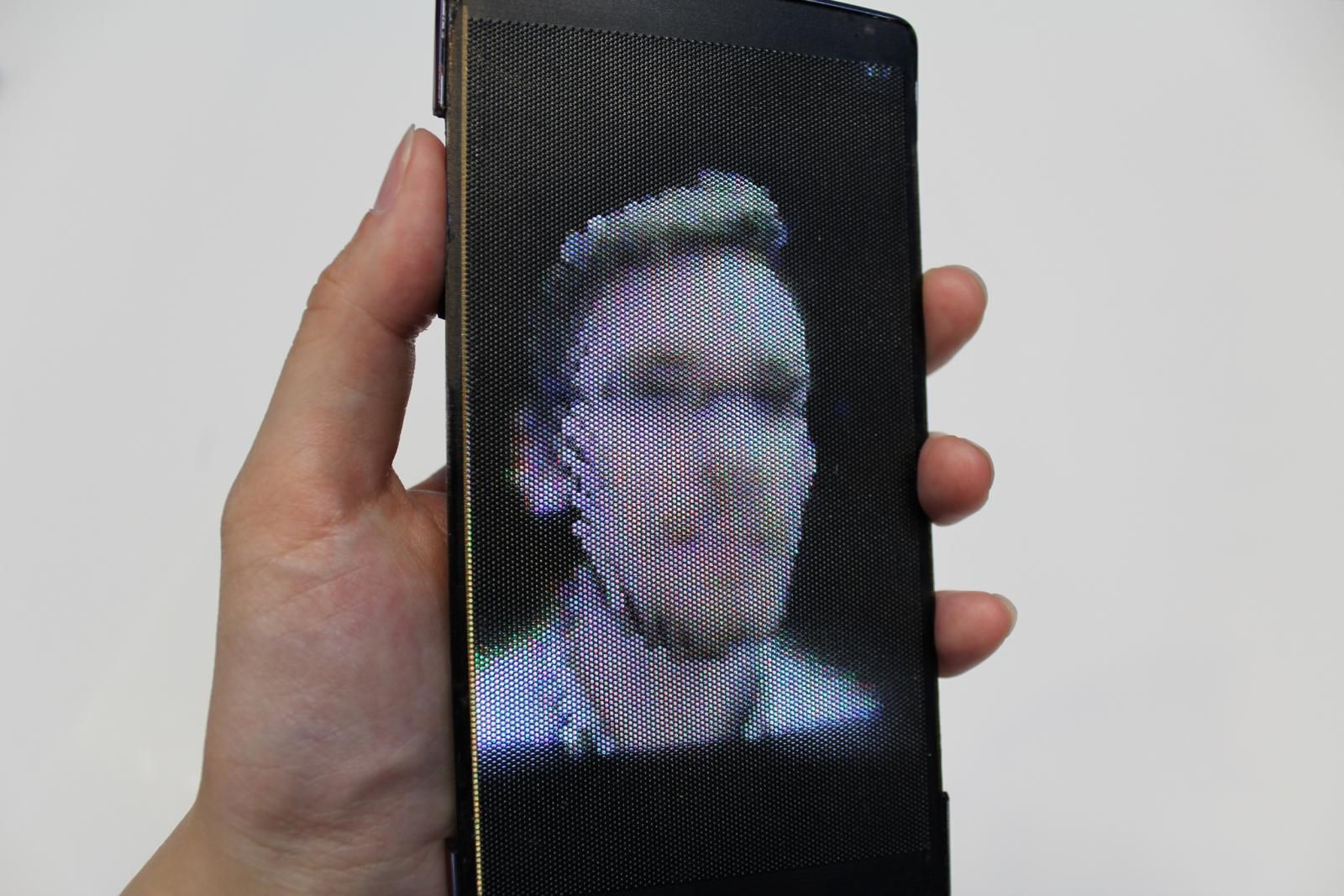The Human Media Lab at Queen’s University in Kingston, Ontario, isn’t a stranger to mobile innovations — it made the ReFlex flexible smartphone concept after all. But in light of holograms (heh) becoming more and more popular in consumer technology, students at the school have decided to take it up to the next step with a flexible smartphone that can project holograms.
Meet the HoloFlex:
It’s bendy, it’s trendy and it’s quite a bit spendy. At least, we suppose the R&D costs of it were. But it combines the boring ‘ol flexibility of a plastic OLED touchscreen with lightfield lens array that preserves information about where light bounces from and to in an image — those up on Lytro’s cameras know what we’re looking at.
While a demo unit is for show, what it shows off is practicality: users editing a 3D model can tilt the screen to rotate their view of the device and transform elements of it on the X- and Y-axes by simple touch or on the Z-axis (the depth axis) by bending the phone in and out. No need for special glasses or an apparatus.
HoloFlex — not to be confused with Microsoft’s HoloLens — can also be purposed for games, multimedia and video conferencing.
“By employing a depth camera, users can also perform holographic video conferences with one another,” says Prof. Roel Vertegaal, PhD, director of the Human Media Lab. “When bending the display, users literally pop out of the screen and can even look around each other with their faces rendered correctly from any angle to any onlooker.”
The device will be demonstrated at ACM CHI 2016 in San Jose on May 9.
Source: Queen’s University
Via: BGR

